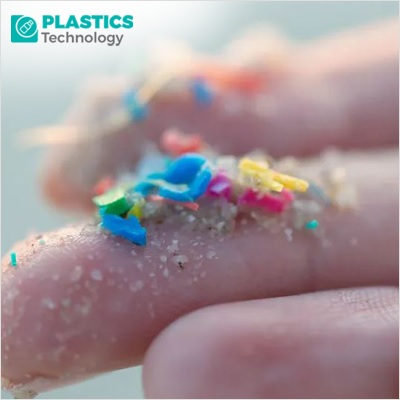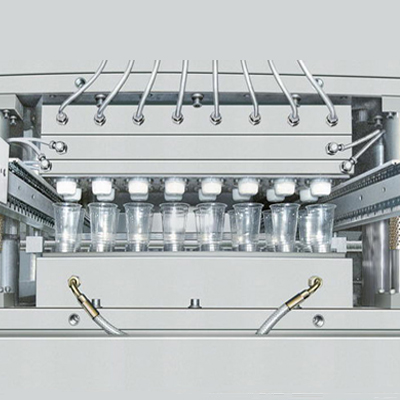The Impact of Microplastics: Understanding Risks and Mitigation Strategies

Introduction:
Microplastics, tiny plastic particles less than 5mm in size, have become a global environmental concern due to their pervasive presence in various ecosystems. Understanding their impact, risks, and effective mitigation strategies is crucial for environmental conservation and human health protection.
What are Microplastics?
Microplastics are categorized into primary microplastics, such as microbeads in cosmetics, and secondary microplastics, resulting from the breakdown of larger plastic debris. They enter the environment through various sources, including industrial processes, plastic waste, and synthetic fiber shedding.
Environmental Risks:
Microplastics, ubiquitous in modern environments, present multifaceted environmental risks that demand urgent attention. One primary concern is their role in ecosystem contamination, as these minute particles infiltrate soil, water bodies, and marine environments. Once introduced, they pose a significant threat to aquatic life and terrestrial ecosystems alike. The widespread presence of microplastics in these environments not only directly affects organisms but also disrupts vital ecological processes, leading to cascading effects throughout entire ecosystems.
A particularly concerning consequence of microplastic pollution is the disruption of the food chain. Marine organisms, ranging from small plankton to large marine mammals, inadvertently ingest these particles. This ingestion can lead to bioaccumulation, where microplastics accumulate in tissues over time, posing risks to species at higher trophic levels. Ultimately, this contamination extends to human populations that rely on seafood, potentially exposing them to microplastics and associated pollutants, highlighting the interconnectedness of environmental and human health concerns.
Furthermore, microplastics act as vectors for pollutant transport, compounding environmental and health risks. These tiny particles have a remarkable capacity to absorb and concentrate various toxic chemicals and heavy metals from their surroundings. As a result, they become carriers of pollutants, facilitating their transfer across ecosystems and exacerbating their impact on both environmental integrity and human health. This pollutant transport mechanism amplifies the challenges posed by microplastic pollution, necessitating comprehensive strategies for mitigation and remediation.
The environmental risks associated with microplastics encompass a complex interplay of contamination, food chain disruption, and pollutant transport. Addressing these risks requires interdisciplinary efforts, including rigorous research, stringent regulatory frameworks, innovative technologies, and public awareness initiatives. By understanding and mitigating these risks effectively, we can work towards preserving the integrity of ecosystems and safeguarding the health of both wildlife and human populations.
Health Risks:
The health risks associated with microplastics represent a growing concern, primarily due to their widespread presence in various mediums, including drinking water, seafood, and even the air we breathe. This pervasive exposure pathway raises significant apprehensions regarding potential health impacts on human populations.
One of the primary health risks stems from human exposure to microplastics through consumption and inhalation. Studies have detected microplastics in drinking water sources, such as rivers, lakes, and even bottled water, highlighting the ubiquitous nature of this contamination. Additionally, seafood, a staple in many diets worldwide, can also harbor microplastics, leading to potential ingestion by humans. Inhalation of airborne microplastics further compounds exposure routes, especially in urban areas where microplastic pollution in the atmosphere is prevalent. These exposure pathways underscore the need for thorough assessments of human health risks associated with microplastic exposure.
Research has identified several potential health impacts linked to microplastics. These include inflammation, oxidative stress, and the transfer of harmful chemicals from microplastics to organisms upon ingestion or inhalation. Inflammation is a key concern as it can contribute to the development or exacerbation of various health conditions, including respiratory ailments and cardiovascular diseases. Oxidative stress, another consequence of microplastic exposure, can disrupt cellular functions and contribute to the progression of oxidative damage in tissues.
Furthermore, the transfer of harmful chemicals associated with microplastics adds another layer of complexity to the health risks. Microplastics have the capacity to adsorb persistent organic pollutants (POPs) and other toxic substances from their surroundings. Upon ingestion, these chemicals can leach into tissues or be released within the digestive tract, potentially leading to systemic effects and long-term health implications.
Despite growing awareness, the long-term effects of chronic microplastic exposure on human health remain a subject of ongoing research and debate. Understanding the cumulative impact of continuous exposure to microplastics over extended periods is essential for evaluating potential health risks comprehensively. The health risks associated with microplastics encompass diverse exposure pathways, potential physiological impacts, and uncertainties regarding long-term effects. Continued research, robust risk assessments, and proactive measures to mitigate microplastic pollution are imperative to safeguarding human health in the face of this emerging environmental challenge.
Mitigation Strategies:
Effective mitigation strategies are crucial in addressing the pervasive threat of microplastic pollution to the environment and human health. These strategies encompass a range of approaches aimed at reducing microplastic contamination at its source, enhancing waste management practices, raising public awareness, and fostering research and innovation.
Regulatory measures play a pivotal role in mitigating microplastic pollution by implementing stringent regulations on plastic production, usage, and disposal. This includes policies targeting single-use plastics, microbeads in personal care products, and plastic waste management. By enforcing these regulations, governments can significantly reduce the input of microplastics into the environment, mitigating their adverse impacts on ecosystems and human health.
Improving waste management systems is another essential mitigation strategy. This involves enhancing recycling initiatives, promoting the use of eco-friendly alternatives to traditional plastics, and implementing circular economy principles to minimize plastic waste generation. By diverting plastic waste from landfills and incineration, these efforts reduce the likelihood of microplastics entering the environment through improper disposal practices.
Filtration technologies play a critical role in capturing microplastics, particularly in wastewater treatment plants. Developing advanced filtration systems specifically designed to trap microplastics effectively can prevent their release into water bodies and mitigate contamination risks. Investing in research and innovation in this area is key to developing cost-effective and scalable filtration solutions. Public awareness and education initiatives are vital components of microplastic pollution mitigation. Educating the public about the risks associated with microplastics, promoting responsible consumption habits, and advocating for sustainable lifestyle choices can significantly reduce individual contributions to microplastic pollution.
Encouraging consumers to choose products with minimal or no microplastics and supporting businesses that prioritize sustainability further reinforces these efforts.
Finally, investing in research and innovation is essential for advancing our understanding of microplastic pollution and developing effective solutions. This includes researching the sources, pathways, and environmental fate of microplastics, developing biodegradable plastics as alternatives, and innovating cleanup technologies for contaminated environments. Collaborative efforts between government, academia, industries, and NGOs are crucial in driving progress in microplastic pollution mitigation.
In conclusion, a multi-faceted approach combining regulatory measures, waste management improvements, filtration technologies, public awareness campaigns, and research-driven innovation is necessary to effectively mitigate microplastic pollution and safeguard environmental and human health.
Conclusion:
Microplastics pose significant environmental and health risks, requiring proactive measures at individual, industry, and policy levels. By understanding these risks and implementing effective mitigation strategies, we can work towards a cleaner, healthier planet for present and future generations.



